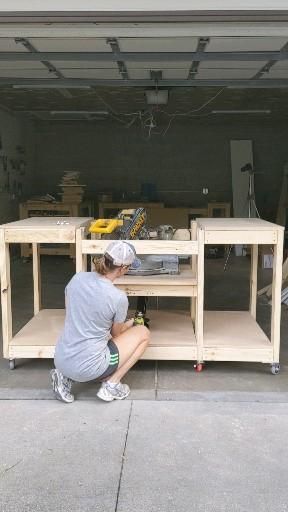What are casings in woodwork? Woodwork, as the name suggests, involves working with wood to create various structures and designs. One important aspect of woodwork is the use of casings, which play a crucial role in both the function and aesthetics of a project. Whether you are new to woodworking or an experienced craftsman, understanding the purpose and types of casings is essential for achieving the desired look and functionality of your woodworking projects.
Casings in woodwork serve both practical and decorative purposes. They are used to frame doors, windows, and other openings, providing a finished look while also covering any gaps between the wall and the door or window frame. Additionally, casings can enhance the overall visual appeal of a space by adding architectural detail and creating a cohesive design.
There are different types of casings used in woodwork, each offering unique styles and features to complement various woodworking projects. Understanding these options and choosing the right casing for your specific needs is crucial for achieving professional results.
In this article, we will explore the different types of casings, how to select the right one for your project, as well as tips for proper installation and maintenance. Whether you are renovating a space or embarking on a new woodworking project, mastering the use of casings can significantly impact the final outcome.
The Purpose and Function of Casings in Woodwork
Wood casings in woodwork serve both functional and aesthetic purposes. They are essential components that play a crucial role in the overall look and feel of woodwork projects. The primary function of casings is to frame doors, windows, and other openings, providing a finished appearance to the edges while also concealing any gaps or discrepancies between the wall and the door or window frame.
Enhancing Aesthetics
Casings also contribute to the aesthetic appeal of a space, adding architectural detail and creating a polished look. They come in various styles, sizes, and designs, allowing for creativity and personalization when it comes to interior décor. Whether you prefer a traditional, rustic, or modern look, choosing the right casing can greatly enhance the visual impact of your woodwork.
Protective Role
In addition to their decorative function, casings also help protect the edges of doors and windows from wear and tear. By covering raw edges and gaps, they prevent moisture from seeping into the wood or drywall, ultimately prolonging the lifespan of these structural elements. This protective role is especially important in high-traffic areas where doors and windows are frequently opened and closed.
Considering these factors highlights how essential casings are in woodwork projects, influencing not only the visual appeal but also the durability and functionality of doors and windows within a space. When choosing casings for your next project, it’s crucial to consider both their practical purpose as well as their design impact.
Different Types of Casings Used in Woodwork
Casings in woodwork come in a variety of styles and types, each serving a different purpose and contributing to the overall look and feel of the space. When it comes to choosing the right casing for your woodwork project, it’s important to consider the style of the space, as well as the functionality you are looking for. Here are some common types of casings used in woodwork:
- Flat Casing: This type of casing is simple and versatile, giving a clean and modern look to the woodwork. It works well with contemporary and minimalist design styles.
- Ranch Casing: Often found in traditional or ranch-style homes, this type of casing has a simple profile with rounded edges, adding a classic touch to the woodwork.
- Colonial Casing: With its elegant and timeless design, colonial casing features a more decorative profile with detailed edges, making it suitable for formal or traditional interior designs.
When choosing the right casing for your woodwork project, consider the architectural style of your home or space, as well as your personal preferences. It’s also important to take into account the material of the casing, whether it’s solid wood, MDF (medium-density fiberboard), or other options.
In addition to these common types of casings, there are also specialty options available such as fluted casings with vertical grooves for added texture, or custom-designed casings that can be tailored to suit specific aesthetic preferences. Ultimately, the type of casing you choose will greatly impact the overall look and feel of your woodwork project.
How to Choose the Right Casing for Your Woodwork Project
When it comes to choosing the right casing for your woodwork project, there are a few key factors to consider. The type of casing you choose can greatly impact the overall look and feel of your space, so it is important to make an informed decision. Here are some things to keep in mind when selecting casings for your woodwork project:
- Style: Consider the style of your space and choose a casing that complements it. For a more traditional look, opt for a simple and classic casing design. If you prefer a more modern aesthetic, a sleek and minimalistic casing may be more suitable.
- Material: Casings come in various materials such as wood, MDF, PVC, and polyurethane. Each material has its own unique characteristics and advantages, so think about what will work best for your specific project.
- Size: The size of the casing should be proportionate to the size of the room and the height of the ceilings. A larger room with high ceilings may require a wider and more substantial casing, while smaller rooms may benefit from a thinner profile.
Ultimately, the right casing for your woodwork project will depend on your personal preferences, the style of your space, and the specific requirements of the project. It is important to take all these factors into consideration before making a decision.
Remember that casings play an essential role in framing doors, windows, and other architectural features in woodwork. Choosing the right casing can enhance the overall aesthetic appeal of a space and tie together various design elements. By carefully considering style, material, and size, you can select casings that perfectly complement your woodwork project.
The Installation Process of Casings in Woodwork
Firstly, it’s important to measure the area where the casing will be installed accurately. This includes the length and width of the opening, as well as any angles or corners that may need special attention. Once the measurements are taken, the casing material can be cut to fit using a saw or miter box. This step is crucial to ensure a precise fit and clean lines around the opening.
Next, the casing is attached to the wall using nails or screws. It’s important to make sure that the casing is level and properly aligned before securing it in place. Depending on the type of casing being used, additional steps such as caulking or filling nail holes may be necessary for a seamless finish.
In addition to traditional wooden casings, there are also pre-made and composite options available for those who prefer easy installation. These alternative materials can save time and effort during the installation process while still providing a high-quality finished look.
| Installation Process Step | Description |
|---|---|
| Measure accurately | Take precise measurements of the opening to cut casing material accordingly. |
| Attach casing | Secure the casing in place with nails or screws, ensuring it is level and properly aligned. |
| Consider alternative materials | Pre-made or composite casings can offer easier installation without sacrificing quality. |
Common Mistakes to Avoid When Working With Casings
When working with casings in woodwork, it’s important to be aware of common mistakes that can easily be avoided. Making the right choices and taking proper care when working with casings can ensure a successful and aesthetically pleasing woodwork project. Here are some common mistakes to avoid:
Choosing the Wrong Type of Casing
One common mistake is choosing the wrong type of casing for your woodwork project. It’s essential to consider the style and function of the space when selecting casings. For example, a more ornate casing may be better suited for a formal living room, while a simpler casing may work well in a more casual space. Additionally, considering the architectural style of the home can help determine the appropriate type of casing to use.
Poor Measurement and Planning
Another mistake to avoid is poor measurement and planning when installing casings. Taking accurate measurements and carefully planning the layout of the casings beforehand can prevent issues such as gaps or uneven spacing. It’s important to measure twice and cut once to ensure a precise and professional finish.
Ignoring Maintenance and Care
It’s crucial not to overlook the maintenance and care of casings once they are installed. Neglecting regular cleaning or refinishing can cause casings to deteriorate over time, impacting the overall look of the woodwork. Proper maintenance, such as cleaning with gentle solutions and recoating with protective finishes when necessary, can prolong the life of casings and preserve their appearance for years to come.
By being mindful of these common mistakes, individuals can effectively work with casings in woodwork projects, ensuring a polished result that enhances the overall aesthetic of any space.
Creative and Decorative Ideas for Using Casings in Woodwork
When it comes to woodworking, casings can be more than just a functional element. They can also serve as a decorative and creative feature that adds aesthetic value to the overall design of a space. One innovative way to use casings in woodwork is by incorporating intricate designs and patterns into the casing itself. This can be achieved through techniques such as carving, routing, or even using different types of wood to create contrasting tones and textures.
Another creative idea for using casings in woodwork is to explore the concept of layering. By adding multiple layers of casings with varying widths, depths, and profiles, you can create a visually captivating effect that adds depth and dimension to the woodwork. This technique is particularly effective when used around doors, windows, or built-in cabinetry, as it draws attention to these architectural elements and creates a sense of elegance and sophistication.
Furthermore, casings can also be utilized as a means of highlighting specific areas within a space. For example, using casings with built-in LED lighting can effectively illuminate certain architectural features or highlight decorative objects on display. This not only adds a modern touch to the design but also enhances the overall ambiance of the room. Additionally, incorporating custom-designed casings that complement the style and theme of the space can further enhance its visual appeal.
In summary, when it comes to woodworking, there are numerous creative and decorative ideas for using casings in a way that goes beyond their functional purpose. Through innovative designs, layering techniques, and integrating lighting features, casings can play a significant role in enhancing the aesthetic quality of any woodwork project. Whether used around doors, windows, or other architectural elements, thoughtfully designed casings can truly elevate the overall look and feel of a space.
Maintenance and Care of Casings in Woodwork
Casings in woodwork are not only functional but also add aesthetic value to any space. Proper maintenance and care of these casings are essential to ensure their longevity and continue to enhance the overall look of the woodwork. Regular upkeep can prevent damage and preserve the beauty of the casings for years to come.
One important aspect of maintaining casings in woodwork is regular cleaning. Dust, dirt, and grime can build up over time, especially in high-traffic areas. Using a soft cloth or duster to regularly wipe down the casings can help prevent a buildup of dirt that could potentially damage the finish or wood material. For tougher stains, a mild soap and water solution can be used, followed by thorough drying to prevent moisture damage.
In addition to cleaning, it’s important to inspect the casings for any signs of wear or damage. This includes checking for cracks, dents, or chipped paint that may require repair or touch-ups. Addressing minor issues promptly can prevent further damage and extend the lifespan of the casings. Applying a fresh coat of paint or varnish when needed can also help protect the wood from moisture and other elements.
| Maintenance Tips | Care Techniques |
|---|---|
| Regular cleaning with a soft cloth or duster | Use mild soap and water solution for tough stains |
| Inspect for cracks, dents, or chipped paint | Address minor issues promptly |
| Apply fresh coat of paint or varnish when needed | Protects wood from moisture and other elements |
Conclusion
In conclusion, casings in woodwork play a crucial role in not only providing a finished look to the edges of doors, windows, and other elements but also in protecting them from wear and tear. Understanding the purpose and function of casings is essential for any woodwork project. Whether it’s for practical or aesthetic reasons, choosing the right type of casing can greatly enhance the overall look and feel of a space.
When it comes to choosing the right casing for your woodwork project, consider the style and design of the space, as well as the specific function of the casing. There are various types of casings available, from simple and classic designs to more intricate and decorative options. Additionally, paying attention to proper installation techniques and maintenance can ensure that your casings not only look great but also last for years to come.
Ultimately, casings in woodwork are more than just finishing touches – they can make a significant impact on the overall aesthetic of a space. By understanding their purpose, choosing the right type, avoiding common mistakes, and getting creative with decorative ideas, you can elevate any woodwork project to new heights. Whether it’s adding charm to a room or tying together a design concept, casings are an important element that should not be overlooked in any woodworking endeavor.
Frequently Asked Questions
What’s the Difference Between Baseboard and Casings?
Baseboard and casings serve different functions in trimming out a room. Baseboards are installed at the bottom of walls to cover the joint between the wall and the floor, while casings are used to frame doors and windows. Baseboards help protect walls from kicks, abrasion, furniture legs, and other impacts, whereas casings provide a decorative touch around doors and windows.
What Is Casing in Trim?
Casing in trim refers to the decorative molding used to frame doors and windows. It provides a finished look by covering gaps between the wall surfaces and door or window frames. Casings come in various styles and designs, adding architectural interest to a room. They can also be coordinated with baseboards for a cohesive look throughout a space.
What Is Carpentry Casing?
In carpentry, casing specifically refers to the trim used around doors and windows. This type of casing is typically made from wood or composite materials and can be customized with different profiles and details to suit the overall design aesthetic of a building or room.
Carpentry casing helps define the architectural style of a space while hiding any gaps or imperfections between the wall surface and the door or window frame.

Hi everyone! I’m a woodworker and blogger, and this is my woodworking blog. In my blog, I share tips and tricks for woodworkers of all skill levels, as well as project ideas that you can try yourself.





